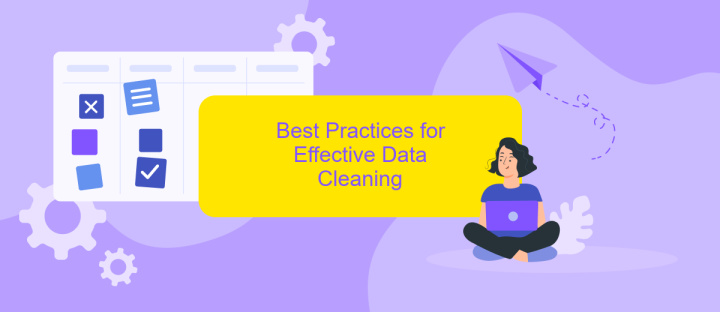ETL Data Cleaning
ETL (Extract, Transform, Load) data cleaning is a critical process in data management that ensures the accuracy, consistency, and reliability of data before it is analyzed or used for decision-making. By systematically identifying and correcting errors, removing duplicates, and standardizing data formats, ETL data cleaning helps organizations maintain high-quality datasets that drive better insights and business outcomes.
ETL and Data Cleaning Overview
ETL (Extract, Transform, Load) is a crucial process in data management that involves extracting data from various sources, transforming it into a suitable format, and loading it into a destination system. This process ensures that data is accurate, consistent, and usable for analysis and reporting. Data cleaning, a vital part of the ETL process, involves identifying and correcting errors, inconsistencies, and inaccuracies in the data.
- Extract: Retrieving data from diverse sources such as databases, APIs, and flat files.
- Transform: Converting data into a desired format, including data cleaning, normalization, and aggregation.
- Load: Inserting the transformed data into a target system such as a data warehouse or data lake.
Effective data cleaning is essential for maintaining data quality and reliability. Tools like ApiX-Drive can simplify the integration process by automating data extraction and transformation from multiple sources, ensuring that the data loaded into your system is clean and ready for analysis. By leveraging such tools, organizations can streamline their ETL workflows and enhance their data-driven decision-making capabilities.
Common Data Cleaning Challenges

One of the most common data cleaning challenges in ETL processes is dealing with missing or incomplete data. Incomplete datasets can lead to inaccurate analysis and insights, making it crucial to identify and handle gaps effectively. Techniques such as imputation, where missing values are estimated based on other available data, or simply removing incomplete records, are often employed. However, each method has its drawbacks and must be chosen based on the specific context and data sensitivity.
Another significant challenge is ensuring data consistency and standardization. Data often comes from multiple sources and formats, leading to discrepancies that can affect the quality of the final dataset. Standardizing data types, formats, and units is essential to create a uniform dataset. Tools like ApiX-Drive can facilitate this process by automating data integration from various sources, ensuring consistency and reducing the manual effort required. This not only saves time but also enhances the accuracy and reliability of the data.
Best Practices for Effective Data Cleaning

Effective data cleaning is a critical step in the ETL process, ensuring that the data used for analysis is accurate and reliable. Following best practices can significantly improve the quality of your data and the efficiency of your ETL pipeline.
- Standardize Data Formats: Ensure consistency in data formats, such as dates and phone numbers, to facilitate easier analysis and integration.
- Remove Duplicates: Identify and eliminate duplicate records to maintain data integrity and avoid skewed analysis results.
- Handle Missing Values: Address missing data by either imputing values or removing incomplete records, depending on the context and the importance of the missing information.
- Validate Data Accuracy: Regularly validate data against known benchmarks or external sources to ensure its accuracy and reliability.
- Automate Data Cleaning: Utilize tools like ApiX-Drive to automate data cleaning processes, reducing manual effort and minimizing errors.
Adhering to these best practices will help you maintain high-quality data, which is essential for accurate analysis and decision-making. Automating data cleaning tasks with services like ApiX-Drive can further streamline your ETL process, allowing your team to focus on more strategic activities.
Tools and Techniques for Data Cleaning

Data cleaning is a crucial step in the ETL (Extract, Transform, Load) process, ensuring that the data being used for analysis is accurate, consistent, and reliable. This involves identifying and rectifying errors, inconsistencies, and redundancies in the data set. Effective data cleaning enhances the quality of the data, leading to more accurate insights and better decision-making.
Various tools and techniques can be employed for data cleaning, each suited to different types of data and specific cleaning requirements. The choice of tools often depends on the complexity and size of the dataset, as well as the specific issues that need to be addressed. Here are some common tools and techniques used in data cleaning:
- Data Profiling: Analyzing data to understand its structure, content, and quality.
- Data Transformation: Converting data into a consistent format or structure.
- Data Deduplication: Identifying and removing duplicate records.
- Data Validation: Ensuring data meets predefined standards or rules.
- ApiX-Drive: Automating data integration and synchronization across various platforms.
Using these tools and techniques, organizations can significantly improve the quality of their data. For instance, ApiX-Drive can streamline the process of integrating and synchronizing data from multiple sources, reducing the likelihood of errors and inconsistencies. By investing in robust data cleaning practices, businesses can ensure that their data is a reliable asset for strategic decision-making.
- Automate the work of an online store or landing
- Empower through integration
- Don't spend money on programmers and integrators
- Save time by automating routine tasks
Case Studies and Success Stories
One notable case study involves a retail company that faced significant challenges with data inconsistencies across its various branches. By implementing an ETL data cleaning solution, they were able to standardize and validate data from multiple sources. This not only improved the accuracy of their sales reports but also enabled better inventory management. As a result, the company saw a 20% increase in operational efficiency and a significant reduction in data-related errors.
Another success story comes from a healthcare provider that needed to integrate patient data from numerous systems. Using ApiX-Drive, they streamlined the data integration process, ensuring that all patient records were clean, consistent, and up-to-date. This led to more accurate diagnoses and improved patient care. The healthcare provider reported a 30% reduction in administrative workload and a noticeable improvement in patient satisfaction. These examples underscore the transformative impact of effective ETL data cleaning on business operations.
FAQ
What is ETL Data Cleaning?
Why is data cleaning important in ETL processes?
What are common techniques used in ETL Data Cleaning?
How can automation tools help in ETL Data Cleaning?
What challenges are commonly faced in ETL Data Cleaning?
Strive to take your business to the next level, achieve your goals faster and more efficiently? Apix-Drive is your reliable assistant for these tasks. An online service and application connector will help you automate key business processes and get rid of the routine. You and your employees will free up time for important core tasks. Try Apix-Drive features for free to see the effectiveness of the online connector for yourself.


